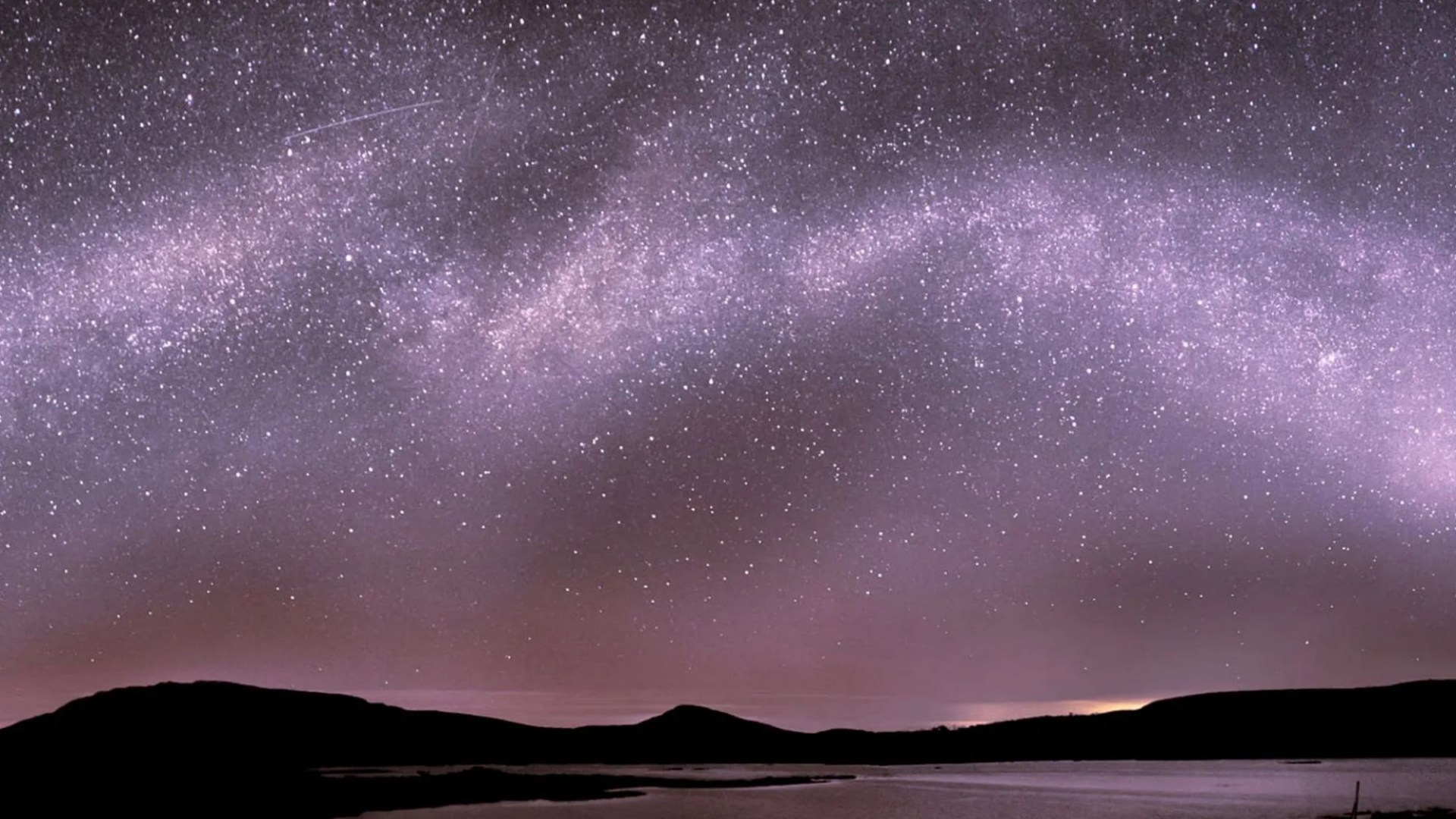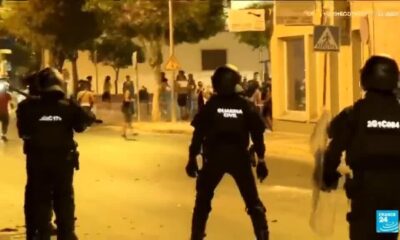Science
Irish Stargazers Prepare for Spectacular Perseid Meteor Shower Tonight

Tonight, enthusiasts in Ireland can anticipate a remarkable display as the **Perseid meteor shower** peaks, offering the chance to witness up to **150 meteors** per hour. According to the **European Space Agency**, this celestial event will create a visual spectacle likened to “natural fireworks” illuminating the night sky, as Earth passes through debris from the ancient **Comet Swift-Tuttle**.
The Perseid shower, which occurs annually, is the result of Earth traveling through the remnants of a comet that has been in existence for over **5 billion years**. The meteors, traveling at an average speed of **58 km per second**, produce bright streaks as they burn up in the atmosphere, creating what are known as meteor trains. Larger meteors can even explode into fireballs, though most will not reach the ground.
Dr. **Shyam Balaji**, a theoretical physicist at **King’s College London**, emphasized the significance of this event, stating, “It is one of the fastest and brightest meteor showers of the year, making it an astronomical highlight for stargazers.” The ideal viewing conditions will be between **midnight and 5:30 AM**, when the sky is darkest, providing optimal opportunities for observation.
Best Viewing Locations and Conditions
To fully appreciate the meteor shower, individuals are encouraged to find locations away from urban light pollution. In cities, areas such as **Phoenix Park** and **Bull Island** in Dublin offer less interference from artificial lights, making them ideal spots for stargazing.
Dr. Balaji recommends looking towards the **constellation Perseus**, as this is the region where the meteors will appear to originate. While observers can scan the entire sky, focusing on this area may yield the best results.
Those planning to watch the shower should prepare for potential challenges posed by the brightness of the full Moon, which may obscure visibility. Stargazers are advised to seek out dark areas, ideally free from street lamps, to enhance their experience.
Understanding Meteors and Comets
For those curious about the differences between asteroids, meteors, and comets, it’s important to understand the following definitions:
– **Asteroid**: A small rocky body orbiting the Sun, primarily found in the asteroid belt between Mars and Jupiter.
– **Meteoroid**: Fragments that break off from asteroids during collisions.
– **Meteor**: A meteoroid that enters Earth’s atmosphere and vaporizes, creating a streak of light.
– **Meteorite**: If a meteoroid survives the atmosphere and lands on Earth, it is termed a meteorite.
– **Comet**: Unlike asteroids, comets contain ice and gas, resulting in spectacular tails as they approach the Sun.
For an optimal viewing experience, stargazers should find a location with an unobstructed view of the horizon and the sky above, avoiding trees and cityscapes. While binoculars may enhance detail, they can also limit overall visibility, so many experts recommend simply using the naked eye to observe the meteors.
To enhance the experience, stargazers might consider using apps like **Sky Guide** or **Stellarium** to help identify celestial bodies and locate the best areas in the sky for viewing the meteor shower.
As anticipation builds for this extraordinary astronomical event, it is a perfect opportunity for individuals and families to step outdoors and connect with the wonders of the universe.
-

 Entertainment2 weeks ago
Entertainment2 weeks agoAimee Osbourne Joins Family for Emotional Tribute to Ozzy
-

 Politics2 weeks ago
Politics2 weeks agoDanny Healy-Rae Considers Complaint After Altercation with Garda
-

 World4 weeks ago
World4 weeks agoHawaii Commemorates 80 Years Since Hiroshima Bombing with Ceremony
-

 Top Stories4 weeks ago
Top Stories4 weeks agoFianna Fáil TDs Urgently Consider Maire Geoghegan-Quinn for Presidency
-

 World4 weeks ago
World4 weeks agoGaza Aid Distribution Tragedy: 20 Killed Amid Ongoing Violence
-

 World4 weeks ago
World4 weeks agoCouple Convicted of Murdering Two-Year-Old Grandson in Wales
-

 World4 weeks ago
World4 weeks agoAristocrat Constance Marten and Partner Convicted of Infant Murder
-

 Top Stories4 weeks ago
Top Stories4 weeks agoClashes Erupt Between Far-Right Groups and Migrants in Spain
-

 Top Stories4 weeks ago
Top Stories4 weeks agoHistoric Dalkey Pub The Queens Reopens Under New Management
-

 World4 weeks ago
World4 weeks agoTrump Defends FBI Deputy Director Amid Epstein Files Controversy
-

 Business4 weeks ago
Business4 weeks agoSunshine 106.8 Boosts Irish Music After Regulator’s Request
-

 Politics4 weeks ago
Politics4 weeks agoTragic Crowd Surge at Gaza Aid Center Claims 20 Lives









